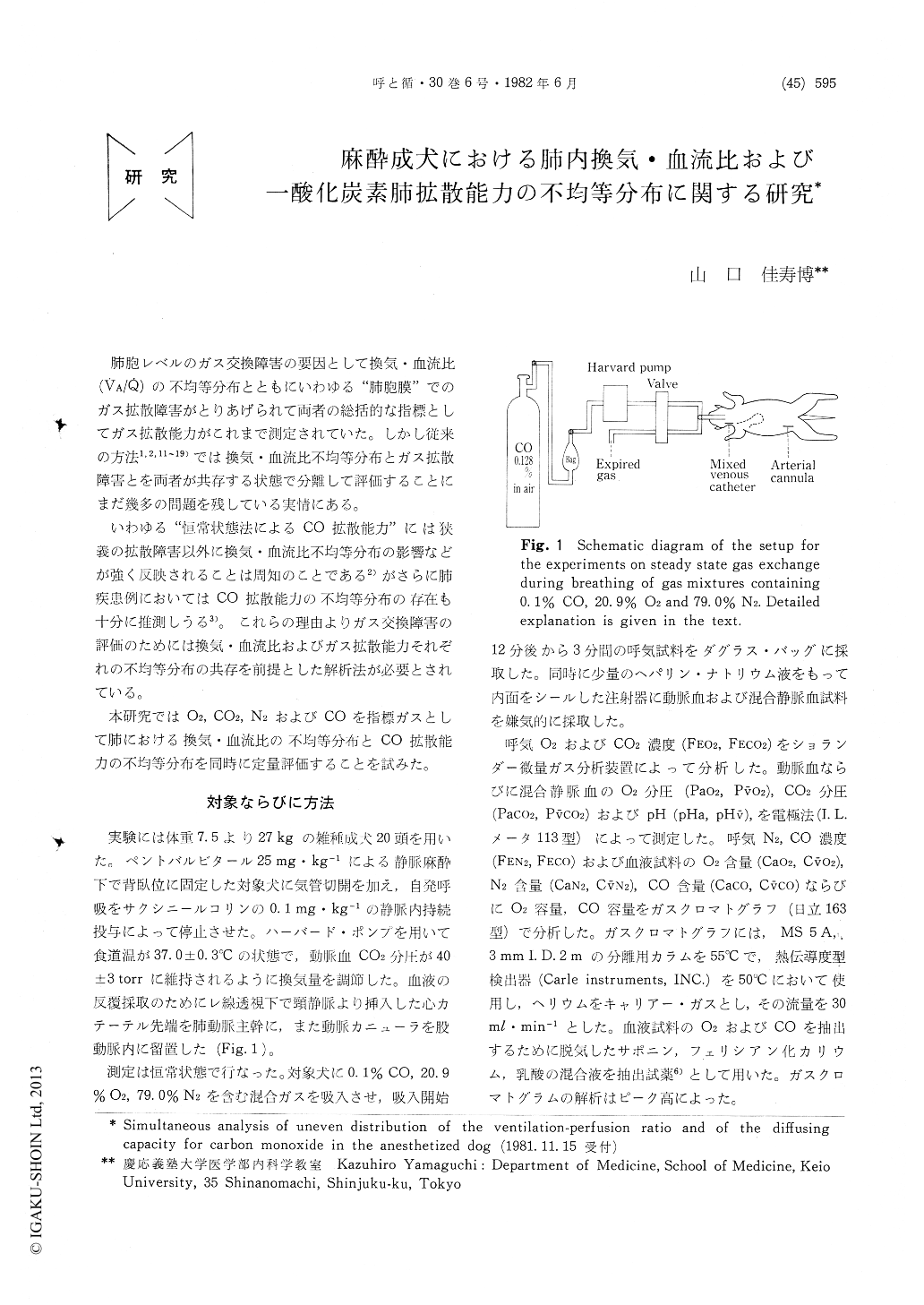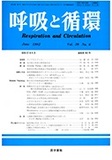Japanese
English
- 有料閲覧
- Abstract 文献概要
- 1ページ目 Look Inside
肺胞レベルのガス交換障害の要因として換気・血流比(VA/Q)の不均等分布とともにいわゆる"肺胞膜"でのガス拡散障害がとりあげられて両者の総括的な指標としてガス拡散能力がこれまで測定されていた。しかし従来の方法1,2,11〜19)では換気・血流比不均等分布とガス拡散障害とを両者が共存する状態で分離して評価することにまだ幾多の問題を残している実情にある。
いわゆる"恒常状態法によるCO拡散能力"には狭義の拡散障害以外に換気・血流比不均等分布の影響などが強く反映されることは周知のことである2)がさらに肺疾患例においてはCO拡散能力の不均等分布の存在も十分に推測しうる3)。これらの理由よりガス交換障害の評価のためには換気・血流比およびガス拡散能力それぞれの不均等分布の共存を前提とした解析法が必要とされている。
In order to demonstrate uneven distribution of the ventilation-perfusion ratio (VA/Q) and of the diffusing capacity for CO (DCO) in the lungs, the anesthetized mongrel dogs, placed in the supine position, were given a mixture of 0.1% CO, 20.9% O2 and 79.0% N2 to breathe for 15 min under a steady state.
Specimens of expired gas, arterial blood and mixed venous blood were simultaneously sampled to analyze them for O2, CO2, N2 and CO.

Copyright © 1982, Igaku-Shoin Ltd. All rights reserved.


